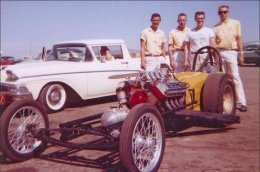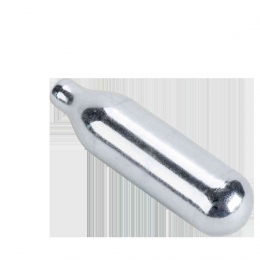Beyond The Screen
Have you ever had the sensation of your entire body tingling with excitement while trying to become the best racer in a racing game? Your fingertips tingle eagerly as you press an unique button on the controller you wield. It simulates driving at a high speed, passing other competitors and forcing them to lose ground to you as you press it. This is what happens when you employ the Nitrous Oxide (N2O)/Nitrous speed boost function.
In racing games, the nitrous oxide function is always applied to the vehicles, giving the players an option. The nitrous oxide function was first used in the racing car game series "Need for Speed". Racing and vehicle-related passions took off after this game, particularly after "Need for Speed: Most Wanted" was released. In this game, players must steer a car at a fast pace while being pursued by police in order to reach the goal of becoming the number 1 blacklist in Rockport city.

Nitrous oxide is not only limited to racing games and movies, but also attending a real-world drug racing event. That's correct—nitrous oxide is not a fictional thing. Perhaps some fans do not believe that there is no real-world example of speeding up quickly. Nitrous oxide accelerates your car to travel really fast is quite incredible. Nitrous oxide has the same function in fiction as it does in real life, which is to greatly accelerate automobiles. Everything will alter even if your automobile has 150 horsepower when you use nitrous oxide.
Into the next section, we'll go deeper with nitrous oxide. Get your seat belts ready and we're off to the tracks!
Nitrous Oxide History
Enthusiasts sometimes refer nitrous oxide as a stronger drug since, as we all know, it can quickly accelerate your car. Speaking of drug, nitrous oxide, also referred to as "laughing gas" in the medical field. Laughing gas is colorless, non-flammable, and has a faintly sweet odor. Nitrous oxide consists of an oxygen atom bonded to two nitrogen atoms. Within the medical area, particularly in the surgical and dental domains, this gas is utilized to generate anesthesia and alleviate pain.
This gas was discovered in 1772 by a researcher named Joseph Priestley while he was conducting experiments on gas isolation. Priestley detected the gas N2O when ammonium nitrate was burned in the presence of iron filings.
Humphrey Davy of the Pneumatic Institute in Bristol, England, conducted experiments on the physiological characteristics of gases, such as their impact on breathing, after Priestley's studies. He even administered the gas to guests of the institute, and he came up with the term "laughing gas" after observing the hilarious impact it had on those who inhaled it! For the following forty years or so, public exhibitions and recreation constituted the main uses for N2O. At carnivals and itinerant medical exhibits, customers would pay a modest fee to breathe in the gas for one minute, a practice known as "nitrous oxide capers." People would stand there in a stupor, laughing and acting goofy until the effects of the drug abruptly ended. (Note*: Nitrous Oxide uses for medical and engine are different. For engine, they add a small amount of sulfur dioxide (SO2) mixed in. It’s unpleasant to inhale and has the potential to harm the lungs).
Nitrous oxide was first used as an anesthetic in dentistry by scientists in the early 1840s. In Hartford, Connecticut, Gardner Quincy Colton staged a presentation at which neighboring dentist Horace Wells saw Cooley's leg injury. After realizing that N2O might have analgesic effects, Wells asked Colton to take part in a study. The first N2O was introduced as a dental and medical painkiller when Colton gave it to Wells without causing him any discomfort.













